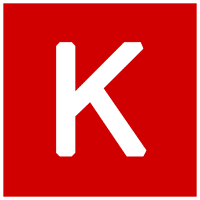Spaces:
Build error
Build error
| import os | |
| import random | |
| import numpy as np | |
| import tensorflow as tf | |
| from PIL import Image | |
| import gradio as gr | |
| from huggingface_hub import from_pretrained_keras | |
| model = from_pretrained_keras("keras-io/GauGAN-Image-generation") | |
| def predict(image_file, segmentation_png, bitmap_img): | |
| image_list = [segmentation_png, image_file, bitmap_img] | |
| image = tf.image.decode_png(tf.io.read_file(image_list[1]), channels=3) | |
| image = tf.cast(image, tf.float32) / 127.5 - 1 | |
| segmentation_file = tf.image.decode_png(tf.io.read_file(image_list[0]), channels=3) | |
| segmentation_file = tf.cast(segmentation_file, tf.float32)/127.5 - 1 | |
| label_file = tf.image.decode_bmp(tf.io.read_file(image_list[2]), channels=0) | |
| # label_file = tf.image.rgb_to_grayscale(tf.image.decode_bmp(tf.io.read_file(image_list[2]), channels=3)) | |
| # print("after decode_bmp --> ", label_file.shape, type(label_file)) | |
| label_file = tf.squeeze(label_file) | |
| image_list = [segmentation_file, image, label_file] | |
| crop_size = tf.convert_to_tensor((256, 256)) | |
| image_shape = tf.shape(image_list[1])[:2] | |
| margins = image_shape - crop_size | |
| y1 = tf.random.uniform(shape=(), maxval=margins[0], dtype=tf.int32) | |
| x1 = tf.random.uniform(shape=(), maxval=margins[1], dtype=tf.int32) | |
| y2 = y1 + crop_size[0] | |
| x2 = x1 + crop_size[1] | |
| cropped_images = [] | |
| for img in image_list: | |
| cropped_images.append(img[y1:y2, x1:x2]) | |
| final_img_list = [tf.expand_dims(cropped_images[0], axis=0), tf.expand_dims(cropped_images[1], axis=0), tf.expand_dims(tf.one_hot(cropped_images[2], 12), axis=0)] | |
| # print(final_img_list[0].shape) | |
| # print(final_img_list[1].shape) | |
| # print(final_img_list[2].shape) | |
| latent_vector = tf.random.normal(shape=(1, 256), mean=0.0, stddev=2.0) | |
| # Generate fake images | |
| fake_image = model.predict([latent_vector, final_img_list[2]]) | |
| fake_img = tf.squeeze(fake_image, axis=0) | |
| return np.array((fake_img+1)/2) | |
| # input | |
| input = [gr.inputs.Image(type="filepath", label="Ground Truth - Real Image (jpg)"), | |
| gr.inputs.Image(type="filepath", label="Corresponding Segmentation (png)"), | |
| gr.inputs.Image(type="filepath", label="Corresponding bitmap image (bmp)", image_mode="L")] | |
| examples = [["facades_data/cmp_b0010.jpg", "facades_data/cmp_b0010.png", "facades_data/cmp_b0010.bmp"], | |
| ["facades_data/cmp_b0020.jpg", "facades_data/cmp_b0020.png", "facades_data/cmp_b0020.bmp"], | |
| ["facades_data/cmp_b0030.jpg", "facades_data/cmp_b0030.png", "facades_data/cmp_b0030.bmp"], | |
| ["facades_data/cmp_b0040.jpg", "facades_data/cmp_b0040.png", "facades_data/cmp_b0040.bmp"], | |
| ["facades_data/cmp_b0050.jpg", "facades_data/cmp_b0050.png", "facades_data/cmp_b0050.bmp"]] | |
| # output | |
| output = [gr.outputs.Image(type="numpy", label="Generated - Conditioned Images")] | |
| title = "GauGAN For Conditional Image Generation" | |
| description = "Upload an Image or take one from examples to generate realistic images that are conditioned on cue images and segmentation maps" | |
| gr.Interface(fn=predict, inputs = input, outputs = output, examples=examples, allow_flagging=False, analytics_enabled=False, | |
| title=title, description=description, article="<center>Space By: <u><a href='https://github.com/robotjellyzone'><b>Kavya Bisht</b></a></u> \n Based on <a href='https://keras.io/examples/generative/gaugan/'><b>this notebook</b></a></center>").launch(enable_queue=True, debug=True) |

